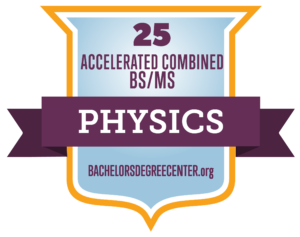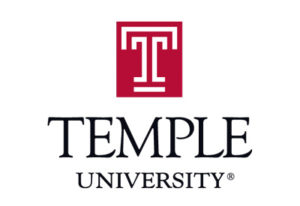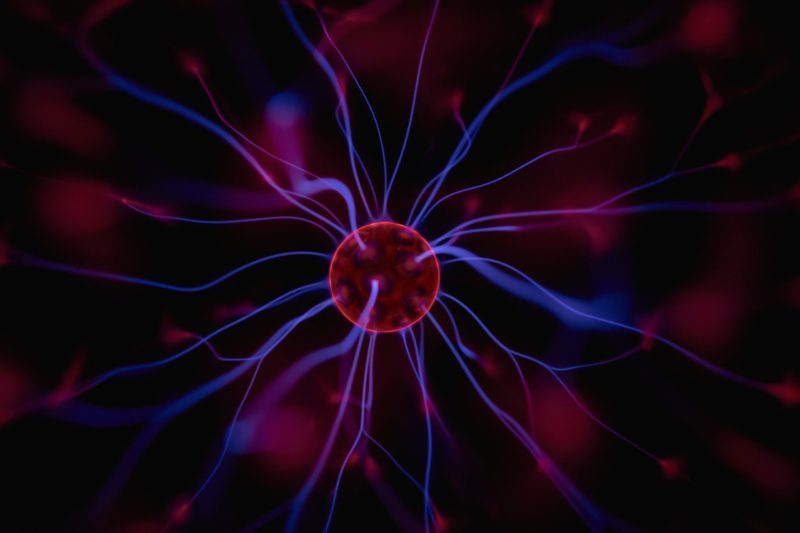
When a degree in physics offers so many opportunities for employment, in so many different fields, there are several benefits of pursuing and acquiring an accelerated physics degree. This program can help to reduce the time frame necessary for completing the degree. It allows you to start a focused program where you are guided by dedicated coursework. You would start as an undergraduate and instead of waiting months or years to get into a higher degree program; you combine both and go from one to the next.
Instead of applying to an undergraduate program for four years and going onto a master’s program, the accelerated physics degree allows you to transcend from one to the next in less time. You will be able to shave up to a year and a half off to graduate sooner. In addition, these degrees can cost less because it is less them and the earning potentials are great. When you apply for a job in your field, employers will be more impressed to see two degrees instead of one.
Methodology: Ranking the Best Accelerated Physics Degree Programs
Students who are serious enough to commit to an accelerated bachelor’s and master’s programs are also serious enough to care about the value of their degree. That’s why Bachelor’s Degree Center editors feature only legitimate, accredited institutions, ranked according to cost, potential salary, and student satisfaction.
1. University of Maryland Baltimore County

The University of Maryland Baltimore County offers a combination of a Bachelor of Science & a Master of Science degree in Physics that is among Maryland’s best accelerated physics degree program. This combo degree program in physics allows advanced physics students to apply nine credits of undergraduate work towards an MS in physics degree. These classes include an intro to quantum mechanics, mathematical physics, electromagnetic theory, and optics, among others. Students, when they have completed the junior year of their undergraduate studies, can apply for admittance.
The University of Maryland (UM Baltimore County) was established in 1966 as a public higher learning institution. UMBC is recognized as the fourth largest of member schools in the state’s university system.
What We Like: The university’s campus in Catonsville is home to approximately 13,550 full-time and part-time students.
Program: Combined BS/MS in Physics
University of Maryland Baltimore County Combined BS/MS in Physics
2. Illinois Institute of Technology

The Illinois Institute of Technology offers an accelerated physics degree program that offers a hybrid delivery of classes. Students enrolled in Illinois Tech’s accelerated physics degree program have the opportunity of completing both degrees (BS and Master of Applied Science (MAS)) in only 60 months. Students graduate from Illinois Institute of Technology’s accelerated degree program find rewarding careers as reactor health physicists, radiation therapists, radiation safety officer, or environmental health physicists, to name a few.
The Illinois Institute of Technology can trace its roots back to 1890. The university was formed when two local institutes joined to create the Illinois Institute of Technology. The institute’s campus in Chicago is home to approximately 7,150 students.
What We Like: The Illinois Institute of Technology holds the distinction of being one of the first higher learning institutions to host a navy training program during the second world war.
Program: Accelerated B.S./M.S.
Illinois Institute of Technology Accelerated Physics B.S./M.S.
3. Northeastern University

Northeastern University offers a dual Bachelor of Science degree (BS) and Master of Science (MS) degree in Physics that saves students a complete year of studies. Northeastern University’s accelerated physics degree program allows for up to 16 credits earned at the undergraduate level to be applied towards a graduate degree. After a student has earned their undergraduate degree in physics, they will only need 14 semester credits to meet the graduate program requirements. Classes for these dual degree programs are ordered sequentially.
Northeastern University is a multiple-campus university that was established in 1898. Northeastern University maintains campuses across the United States and in London, England. Approximately 27,250 students attend classes offered by Northeastern University.
What We Like: Northeastern University is world-renowned for its cooperative education programs that allow students to earn full-time wages while studying.
Program: BS/MS
Northeastern University BS/MS Physics
4. Rochester Institute of Technology

The Rochester Institute of Technology offers a dual degree program in physics that offers students the opportunity to complete a BS degree — a Bachelor of Science (BS) & a Master of Science (MS) degree program in about five years, instead of the traditional six years. This dual accelerated physics degree program offers several academic concentrations in research, professional, materials science & engineering, science, technology & public policy, and astrophysical sciences and technology. The baccalaureate degree program requires between 144 and 151 semester credits to meet program requirements, depending on the academic concentration.
The Rochester Institute of Technology (Rochester) is a private school that was established in 1829 for research. RIT’s campus in Henrietta is home to approximately 18,950 students.
What We Like: The Rochester Institute of Technology is world-renowned for its Institute for the Deaf, serving more than 1,000 students.
Program: Dual BS/MS
Rochester Institute of Technology Dual BS/MS Physics
5. Binghamton University

SUNY Binghamton University offers a dual 4+1 accelerated physics degree program that permits degree candidates to complete their graduate degree in only one year instead of the traditional two years. Students enrolled in SUNY Binghamton’s accelerated physics degree program begin to take graduate-level courses their senior year of undergraduate studies. The MS degree awarded will be in materials science & engineering, where up to 12 semester credits completed as an undergraduate student is applied to graduate degree requirements. SUNY Binghamton encourages students to complete the coursework in the sequence recommended to ensure the completion of both degrees.
Binghamton University was initially established as the Triple Cities College in 1946. SUNY Binghamton is home to approximately 17,950 students.
What We Like: SUNY Binghamton operates three primary campuses in Binghamton, Johnson City, and Vestal – all in upstate New York.
Program: 4+1 Degree Programs in Physics
Binghamton University 4+1 Degree in Physics
6. George Mason University

George Mason University offers a dual degree accelerated physics degree program for students seeking to teach secondary education. George Mason University’s MEd degree program confers a degree in curriculum and instruction with an academic emphasis in secondary education of physics. Students can apply for entrance into this program after they have completed a minimum of 90 undergraduate credits. Classes for this degree program includes teaching science in secondary schools, advanced methods of teaching science in secondary schools, research in secondary education, literacy in the content areas, plus two internships, to name a few.
George Mason University (Mason) was established by a Virginia planter in 1949. George Mason University operates several campuses through the Commonwealth of Virginia that serve approximately 38,150 students.
What We Like: George Mason University was initially founded as a campus of the University of Virginia.
Program: Secondary Education — Physics — Bachelor’s/Accelerated MEd
George Mason University Physics — Bachelor’s/Accelerated MEd
7. Tulane University

The Science and Engineering Physics School at Tulane University offers an accelerated physics degree program that allows students to shave off one year of school when completing a Bachelor of Science degree (BS) and a Master of Science (MS) degree as a combination program. Classes for Tulane’s dual accelerated physics degree program include classical mechanics, molecular biophysics, quantum information, electrodynamics, atomic and molecular physics, statistical mechanics, surface science, and theoretical physics, among others. Students are recommended to apply for this program prior to their junior year to ensure they have the time to complete both degree requirements.
Tulane University is a research university that was established as a medical college in 1834. More than 13,900 undergraduate and graduate degree students attend classes offered by Tulane.
What We Like: Tulane University is recognized as one of the schools that offer the best quality of life.
Program: 4 plus 1 program
Physics 4+1 — Tulane University
8. Creighton University

Creighton University offers an accelerated physics degree program with its dual Bachelor of Science degree (BS) and a Master of Science degree (MS) in Physics. Students enrolled in Creighton University’s accelerated physics degree program can earn up to 12 semester credits that can be applied towards a master’s level degree before a student completes their baccalaureate degree program. The fifth-year that is dedicated to the completion of the master’s degree is available online. Students can save, on average, up to $10,000 in tuition by saving one year of study. Creighton’s bachelor’s degree in physics includes classes in classical mechanics, modern physics lab, quantum mechanics, and thermodynamics & statistical mechanics, to name a few.
Creighton University (Creighton) was founded in 1878 by the Society of Jesus. The university’s urban campus in downtown Omaha is home to approximately 9,150 students.
What We Like: There are nine colleges/schools organized under Creighton University.
Program: Joint BS/MS in Physics
Creighton University Joint BS/MS in Physics
9. Stony Brook University

SUNY Stony Brook University offers a dual accelerated physics degree program for those interested in pursuing a career as a secondary physics teacher. SUNY Stony Brook’s BS and Master of Applied Technology in Physics for Adolescent Education prepares students for state teaching certification in New York for either secondary education for teachers of English to speakers of another language. Degree candidates enrolled in SUNY Stony Brook’s accelerated physics degree program for educators can double count 15 semester credits for undergraduate and graduate degree requirements.
Founded in 1957, Stony Brook University is a space-grant and sea-grant school. Stony Brook’s campus in suburban Long Island, New York, is home to approximately 17,950 students.
What We Like: SUNY Stony Brook holds the distinction of having more Fields Medalist winners than most US schools.
Program: Physics/Adolescent Education: Physics (B.S./M.A.T.)
Stony Brook University Physics/Adolescent Education: Physics (B.S./M.A.T.)
10. University of Pittsburgh

The University of Pittsburgh’s Physics and Astronomy Department offers a Combination of Accelerated Studies in Education (CASE) degree program that prepares students for rewarding careers as high school physics educators. Students enrolled in the accelerated physics degree program offered by the University of Pittsburgh confers a Bachelor of Science degree (BS) in Physics or Physics & Astronomy. Additionally, degree candidates will receive a Master of Arts in Teaching (MAT) in Instruction. Students are encouraged to apply for the University of Pittsburgh’s many school of education grants that are available from $500 to $7,000.
The University of Pittsburgh (Pitt) was established in 1787 when Pittsburgh was still considered a part of the American Frontier. The University of Pittsburgh serves approximately 28,250 students vying for academic degrees offered by the university’s seventeen colleges/schools.
What We Like: The University of Pittsburgh was originally a private school but became public in 1966.
Program: Combined Accelerated Studies in Education (CASE) Preparation Program
University of Pittsburgh Physics
11. Towson University

Towson University offers an accelerated physics degree program with its dual Bachelor of Science (BS) degree and a Master of Applied Physics degree that can be completed in only five years. Students must apply to this program when they have reached their junior year. Nine of the baccalaureate credits can be applied towards the master’s level physics degree. The BS major in physics offers several academic physics concentrations from which to select – general physics, applied physics, computational physics, and astrophysics. The graduate-level degree in physics requires the completion of 37 semester credits.
Towson University, located in Maryland, was established in 1866 as the first teacher’s training school in the state. Towson University’s suburban campus is home to approximately 10,050 students.
What We Like: Towson University has been recognized by US News and World Report among the top 100 public higher learning institutions in the US.
Program: Accelerated Bachelor’s in Physics and Master’s in Applied Physics
Towson University Accelerated Bachelor’s in Physics and Master’s in Applied Physics
12. University of Massachusetts Amherst

The Physics Department at the University of Massachusetts offers an accelerated Master of Science (MS) degree program in physics that allows degree candidates to finish both their undergraduate & graduate degrees in only five years. UMass Amherst’s accelerated physics degree program allows students to apply up to twelve undergraduate semester credits towards their graduate degree requirements. Students interested in the University of Massachusetts at Amherst’s accelerated physics degree program are encouraged to submit an application before the end of November of their junior year.
The University of Massachusetts (UMass Amherst) was established under the Morrill Act as an agricultural college in 1863. The University of Massachusetts at Amherst is recognized as the flagship school for the commonwealth’s university system.
What We Like: The University of Massachusetts at Amherst is a member school of the Five College Consortium, which permits eligible students to take classes at four other local universities/colleges.
Program: Accelerated MS Program
University of Massachusetts Accelerated MS Physics
13. Temple University

Temple University offers an accelerated physics degree program for students who wish to teach physics in secondary schools. Students can opt for a baccalaureate degree as a Bachelor of Arts (BA) degree or as a Bachelor of Science (BS) degree. The graduate degree conferred by Temple is a Master of Education (MEd). Degree candidates graduating from Temple University’s accelerated physics degree education program have met the requirements of the state’s education department licensing standards. The graduate classes for this dual degree include child and adolescent development, teaching science in middle school, and teaching science, technology, and Math through project learning.
Temple University is a multiple-campus institution of higher education that was established in 1884. The university’s main campus in Philadelphia is home to nearly 40,000 students.
What We Like: Temple University is recognized as a leader in the production of professional education programs.
Program: Plus 1 Program in Physics and Secondary Education
Temple University Plus 1 Program in Physics and Secondary Education
14. University of Colorado Boulder

The University of Colorado offers a Bachelor’s‑Accelerated Master’s degree program, which is available for application after a student completes a minimum of 75 semester credits at the baccalaureate level. The University of Colorado Boulder’s accelerated physics degree program offers students two options a BS and MS dual program in engineering physics or a BA and MS dual degree program in physics. Graduate coursework includes electives in the optics lab, gravitational theory, advanced statistical mechanics, and math physics 1 & 2, to name a few.
The University of Colorado (CU) was established prior to the state reaching statehood in 1876. The school’s urban campus in the Boulder, a college town, is home to approximately 35,460 students.
What We Like: The University of Colorado in Boulder was one of more than 100 schools that participated in WWII’s navy college training.
Program: Bachelor’s-Accelerated Master’s Degree
University of Colorado Bachelor’s‑Accelerated Master’s Physics
15. CUNY Queens College

The City University of New York Queens College offers an accelerated physics degree program with its dual Bachelor of Science (BS) degree and Master of Science degree (MS) in Photonics that can be completed in only 60 months. This dual accelerated physics degree program requires the completion of a total of 149 semester credits, which essentially save students the obligation of completing another 14 semester credits. The program is open to only physics majors and is made on a case-by-case basis.
The City University of New York (CUNY — Queens College) is a public university that was established in 1937. The school’s campus in the borough of Queens is home to about 18,500 students.
What We Like: The CUNY Queens College is organized into seven colleges/schools.
Program: Combined Physics B.S. – Photonics M.S. program
Queens College Combined Physics B.S. – Photonics M.S.
16. Oregon State University

The Physics Department at Oregon State University offers an Accelerated Master’s Platform in Physics (AMP), which allows students to complete graduate-level physics classes that are double-applied to both the graduate and undergraduate program. This accelerated physics degree program from Oregon State University allows up to twelve graduate credits to be applied toward a bachelor’s degree in physics. Applicants to Oregon State’s AMP degree must have completed a minimum of 105 semester credits when applying for entrance into the Accelerated Master’s Platform in Physics.
Oregon State University was established as a land grant school by the Morrill Land Grant Act in 1868. In addition, Oregon State University is also designated as a sun-grant, space-grant and sea-grant university, one of only four in the nation.
What We Like: Corvallis is a college town that is home to approximately 31,650 students.
Program: Accelerated Master’s Platform in Physics
Oregon State University Accelerated Master’s Platform in Physics
17. University of North Dakota

The University of North Dakota offers an accelerated physics degree program that allows degree candidates to complete a Bachelor of Science and a Master of Science degree in physics in a dual degree program that only takes five years to complete. The dual degree program mandates the completion of 125–145 credit units for students to graduate. Previous graduates from the University of North Dakota’s accelerated physics degree program entered the workforce working for Kaiser permanents, Los Alamos National Labs, and Hitachi High Technologies, among others.
The University of North Dakota (North Dakota) is the state’s flagship campus that was established in 1885. UND is also a space-grant school that serves approximately 13,450 students online and from its Grand Forks campus.
What We Like: The University of North Dakota was founded about six years before North Dakota became a state.
Program: Physics — Accelerated B.S./M.S.
University of North Dakota Physics — Accelerated B.S./M.S.
18. North Dakota State University

North Dakota State University’s Physics Department (NDSU) offers a dual degree Bachelor of Science degree (BS) and a Master of Science degree program (MS) in Physics that can be completed in only sixty months, essentially saving students an entire year of study. North Dakota State University’s accelerated physics degree program is often used in preparation for entering into a doctoral program in physics. Coursework for this dual degree in physics from North Dakota State University includes modern physics, elements of photonics, condensed matter physics, fundamentals of the physics lab, plus an individual study, to name a few.
North Dakota State University was established as an agricultural college under the Morrill Act in 1890. North Dakota State University’s campus is home to approximately 13,050 students studying for the more than 300 degrees offered by the school.
What We Like: North Dakota State University is recognized as one of the largest employers within the state of North Dakota.
Program: Bachelor of Science and a Master of Science degree in five years
North Dakota State University Physics BS/MS
19. Miami University of Ohio

Miami University of Ohio’s Physics Department offers a dual accelerated physics degree program that confers a Bachelor of Science in Engineering Physics & a Master of Science in Computational Mechanical Engineering in only five years. Both degrees can be completed with 168 semester credits. Classes for this baccalaureate degree include contemporary physics, computational physics, static modeling, mechanics of materials, electronic instrumentation, and electromagnetic theory, plus a graduate research project, to name a few. Students are permitted to apply up to 12 semester credits from their baccalaureate course load to the master’s degree requirements.
Miami University is a multiple-campus higher learning institution that was established in 1809. Miami University is a member school of the state’s university system with approximately 24,250 students.
What We Like: Miami University is recognized as one of the public Ivy League Universities and the tenth oldest public higher learning institution in the country.
Program: Combined BS/MS
Miami University of Ohio Physics Combined BS/MS
20. Hunter College

Hunter College’s Physics and Astronomy Department offers a dual accelerated physics degree program that awards a Bachelor of Arts degree (BA) and a Master of Arts (MA) degree in Physics that can be completed in about sixty months. Students interested in pursuing a Ph.D. in physics are encouraged to apply for this accelerated physics degree program from Hunter College. Classes for this combination degree from Hunter College include electronics, electricity and magnetism, intermediate mechanics, plus classical and modern physics labs, to name a few.
Hunter College is a member school of the City University of New York (CUNY) that was established in 1870 as a women’s school. Hunter College’s urban campus is home to approximately 16,450 students.
What We Like: Hunter College also administers to the Hunter College HS and Hunter College Elementary School.
Program: Accelerated BA/MA Physics Program
Hunter College Accelerated BA/MA Physics Program
21. University of California, Santa Cruz

The University of California, Santa Cruz offers a five-year dual physics degree that confers a Bachelor of Science (BS) degree and a Master of Science (MS) degree in Physics that streamlines the education process by allowing students to earn the dual degrees in only five years. Students enrolled in the University of California Santa Cruz’s accelerated physics degree program begin to take graduate-level physics courses in their junior year. Each dual degree candidate must complete (and defend) a master’s level thesis.
The University of California — Santa Cruz is a member school of the state’s university system that was established in 1965. The University of California Santa Cruz is also a land-grant school with a student enrollment that exceeds 19,450 students.
What We Like: The University of California’s campus sits atop a hill that overlooks both Monterey Bay and the Pacific Ocean.
Program: Five-year B.S./M.S. program
University of California, Santa Cruz 5‑Year Dual Physics Degree
22. University of North Carolina at Charlotte

The University of North Carolina at Charlotte offers an accelerated physics degree program with its dual degree program that, in only five years, confers a Bachelor of Science degree (BS) and Master’s in applied physics degree. Degree candidates enrolled in the University of North Carolina Charlotte’s accelerated physics degree program can begin to take up to twelve graduate-level credits that can be applied to the requirements of both the undergraduate and graduate degree requirements during their senior year when finishing up their baccalaureate degree.
The University of North Carolina @Charlotte was founded as a public university in 1946. The university’s campus in Charlotte is home to approximately 30,050 students vying for degrees offered by UNC Charlotte’s nine colleges/schools.
What We Like: The University of North Carolina at Charlotte holds the distinction of being the largest school in the greater Charlotte metro area.
Program: BS/Master’s in Applied Physics
University of North Carolina at Charlotte BS/Master’s in Applied Physics
23. Virginia Commonwealth University

Virginia Commonwealth University offers a dual degree physics program that awards in five years a Bachelor of Science (BS) degree in Physics and a Master of Science degree (MS) in Physics and Applied Physics. Students enrolled in Virginia Commonwealth University’s accelerated physics degree program are permitted to take up to six graduate semester credits that can be applied to both the undergraduate and graduate-level degrees. Students are encouraged to apply for admittance into this program from Virginia Commonwealth University prior to entering their junior year to allow enough time to complete the dual degree.
Virginia Commonwealth University was originally established as a satellite facility for a medical college in 1838. Virginia Commonwealth University’s s campuses in Richmond is home to approximately 11,150 students.
What We Like: Virginia Commonwealth University maintains two primary campuses in Richmond, the MCV campus and Monroe Park campus.
Program: Accelerated Bachelor of Science (B.S.) in Physics and Master of Science (M.S.) in Physics and Applied Physics
24. Clark University

Clark University offers a dual degree program option for physics majors with its Bachelor of Arts degree (BA) and its Master of Science degree (MS) in Physics that allows students to complete both degrees in five years. Clark University’s accelerated physics degree program requires the completion of ten classes at the graduate level, with students expected to take one of the two core courses before completing their baccalaureate degree. Students’ research studies explore theoretical aspects of condensed matter physics, which includes computational physics, granular materials, energy tech, and ecosystems, among others.
Clark University is a private university that was established by a businessman in 1887. Clark University’s urban campus in Central Massachusetts is home to about 3,500 students.
What We Like: Clark University is recognized as one of the modern research institutions of higher education in the nation.
Program: Physics ADP master’s degree
Clark University Physics ADP Master’s
25. University Alabama at Birmingham

The University of Alabama at Birmingham offers a five year accelerated physics degree program with its ABM program – its accelerated Bachelors/Masters Program. Students attending the University of Alabama’s accelerated physics degree program are permitted to take up to twelve graduate-level credits while earning their baccalaureate degree that can be applied to both programs. Effectively, this dual degree program saves about one year of study for students. Students wishing to apply to this UA Birmingham program can submit an application after earning sixty undergraduate semester credits.
The University of Alabama @Birmingham is a member school of the state’s university system that was established in 1969. The Birmingham campus is home to approximately 13,750 students. The University of Alabama offers more than 125 degree programs from its twelve colleges/schools.
What We Like: It is estimated that about ten percent of the jobs in the Birmingham region are related to UA Birmingham metro area.
Program: Accelerated Bachelors/Masters Program
University of Alabama at Birmingham Accelerated Bachelors/Masters Physics
What are the Advantages of an Accelerated Bachelor’s to Master’s Program?
Usually, when you are a full-time student pursuing a traditional degree, it will take you twelve credits each semester. It means you will be finishing up in four years. However, if you were to go to a physical classroom, it would create this and other scenarios. Typically, master’s degree programs are designed for a two-year period. Most semesters last for sixteen weeks. For the accelerated student, the same number of courses will usually last for one to three years. The courses usually are calculated by terms instead of semesters and so you would probably finish in an eight-week term instead of the longer semesters. There is a certain process for getting into and completing a traditional program versus an accelerated physics degree and in most cases, the student has to be admitted to a program, consult with the financial aid department, see an academic advisor and apply for the graduation. For the accelerated program, you would possibly eliminate the financial aid consultation for some programs. However, some programs do offer aid.
Is an Accelerated BS to MS in Physics Hard?
Nothing is easy in life and higher education; no matter what it is would never be easy. So, let’s get that out of the way. The focus of this program is not to focus on its difficulty, but to get through each coursework; one at a time. The good thing is that you get to finish in a shorter period of time, which means the level of difficulty is constant as it compares to the traditional way where it starts out easy and elevates to a degree of difficulty. Before you consider this program, it is best to go through the pros and cons. When you are done, you will realize that there is more pros.
The reason why some consider the program difficult is because of its shorter time frame and compact coursework and so it requires keen focus and a lot more coursework spread over less time. This accelerated bachelor’s to master’s program involves certain requirements fulfilled and if not, the student has to withdraw. That would be the only obstacle and students can avoid this by handling the coursework in an attentive manner. Because of the compact term period, it forces students to maintain focus in order to complete the program. Instructors do provide students with a lot of guidance and most programs have forums where students can interact and help each other.
What Physics Specialization Should I Choose?
Specialization in physics is important so that you know how to guide your career. Most physics degrees are employable. If you love physics and want to study it, you can enter an accelerated physics program, but once you are ready to complete the program, you should already know physics specializations with which to choose from. Classical mechanics is usually the primary choice for many students. This falls into the category of quantum physics and modern physics.
However, there are other areas within certain industries such as:
- Medical physics
- Engineering physics
- Instrumentation
There are academic jobs you can consider such as teaching physics and later becoming a PhD. Whichever specialization you choose, make sure it is something you like, something that you can use to earn a substantial income with and one that affords you the ability to have fun while working. If you want to become a researcher and love theory, then you may be interested in quantum physics. It is very interesting because there are always new theories within quantum physics that you can work through. Choose a specialization that can earn you more than $100,000 per year to start such as a physicist. According to the Bureau of Labor Statistics, in 2019, a Physicist earned a little more than $122K per year.
Be sure to look at programs where you can use a little breadth so you can figure out which areas best suit you; in the event you want to purse a PhD. Look at ways where you can fit in between experiment and theory or both.
Related Rankings:
25 Best Bachelor’s in Physics
